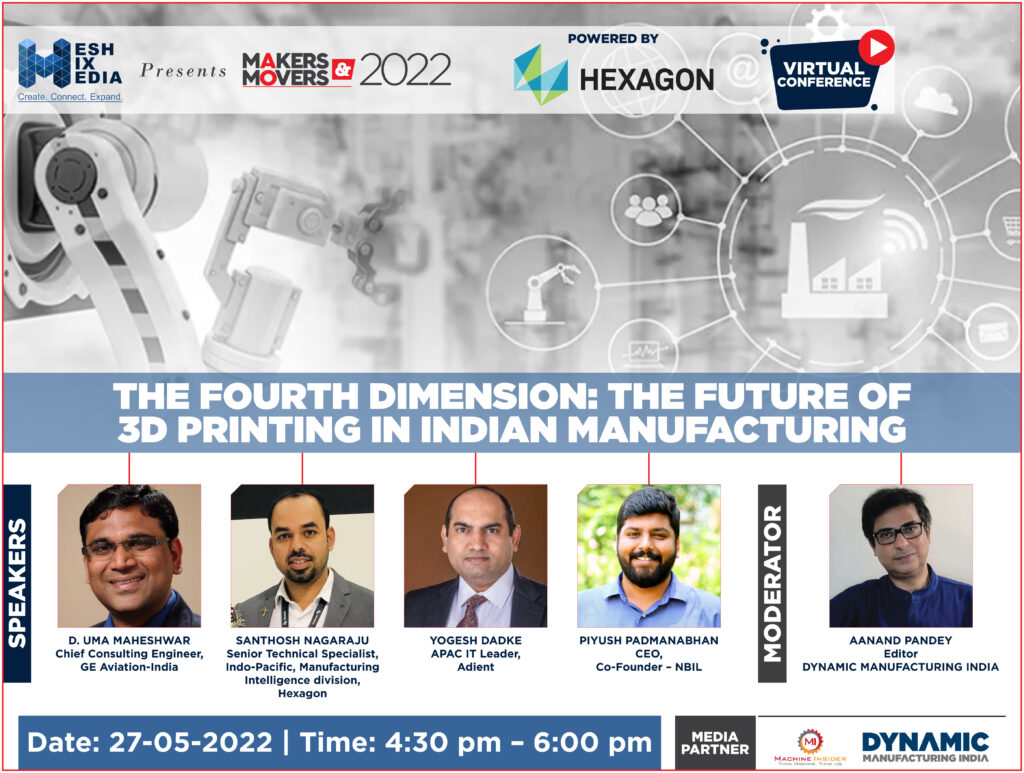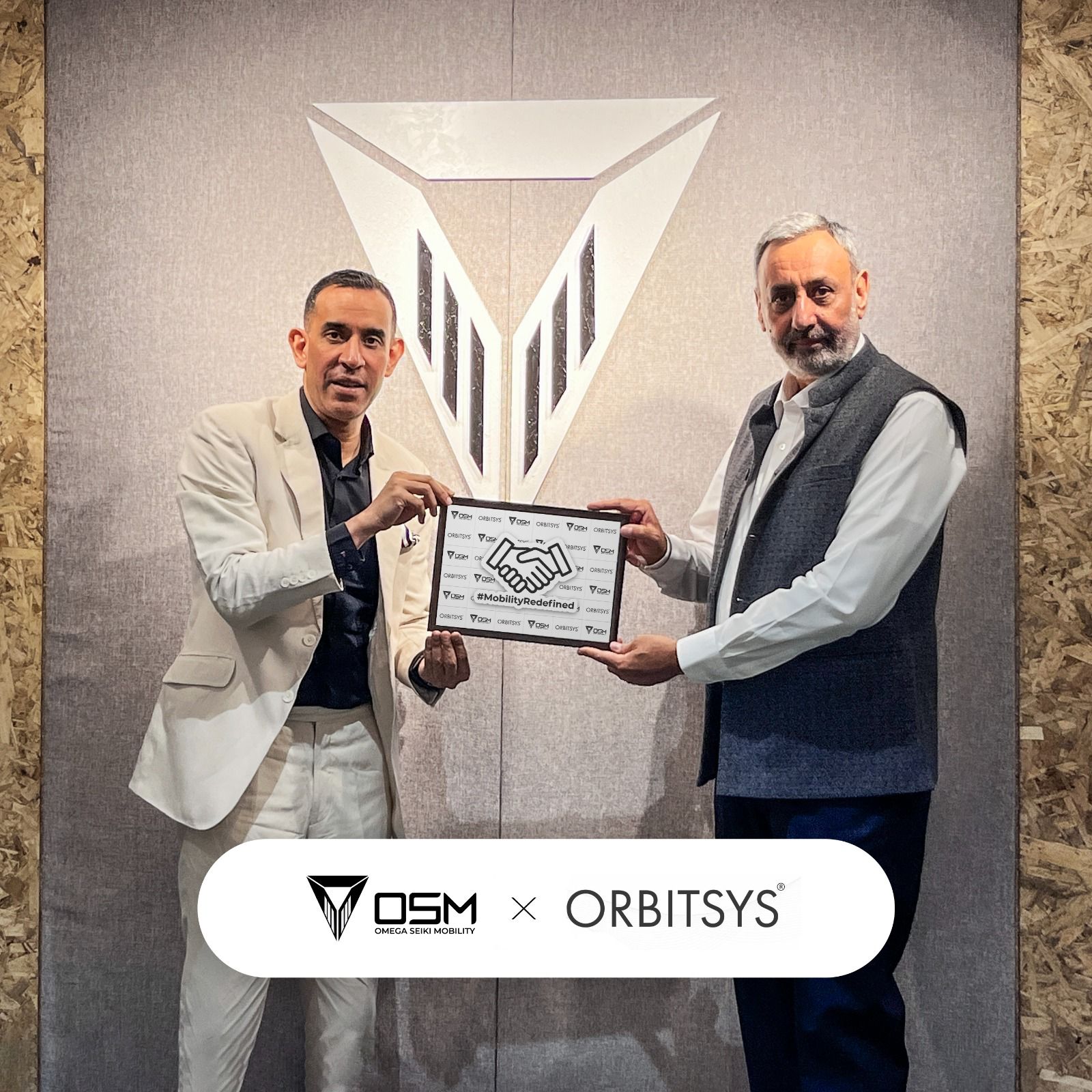The Future of 3D Printing in Indian Manufacturing
The Fourth Dimension: The Future of 3D Printing in Indian Manufacturing
Date 27-05-2022 – Timing – 4.30 pm to 6 PM
Additive manufacturing, the industry term for 3D Printing technology, has grown fast in the last five years to stand on its own as the fourth popular manufacturing method alongside traditional methods such as injection molding, subtractive or ‘machining’, forming, and casting.
The largest share of growth of additive manufacturing is in the end-use parts in the automotive, aerospace and healthcare industries. According to Boston, U.S.-based Lux Research, the value of 3D-printed parts is expected to grow at a 15% CAGR over the next decade from $12 billion in 2020 to $51 billion in 2030. The medical and dental industries will account for the largest share, followed by aerospace.
In India, the sector saw an increase in influence and demand during the peak of the pandemic, when engineers used 3D technologies to design PPE kits, and other lifesaving equipment in a short duration. Before this, 3D Printing has found use in other humanitarian crises such as the April 2015 Nepal earthquake where the technology was used to make water supply units and critical medical devices.
On 27-05-2022 Makers & Movers thought leadership series will put the spotlight on the industry and technology of Additive Manufacturing in our discussion with sector leaders. The main talking points will be as follows:

TALKING POINTS
1. Please cite instances of applications of additive manufacturing in India in your own production facilities or your customers’ facilities deployed through your services, particularly from the last two years.
2. Can you share similar examples of additive-manufacturing applications happening globally that could be adopted in Indian manufacturing?
3. What are the main benefits of incorporating 3D printing into the manufacturing process? (For example, manufacturers such as Volvo, Cummins, General Electric, and Nike cite benefits like faster prototyping, improved precision, better durability of parts, and improved savings and faster time-to-market, etc.)
4. The ultimate goal of 3D printing is to move production close to the point of consumption. Is this a feasible goal, considering that locating production at manufacturing hubs is far more economical, particularly for mass produced goods?
5. How do you see the evolution of adoption of additive manufacturing evolving hereon, globally? For example, do you see it evolving from the current stage of creation of highly specialized, low-volume parts, to that of creating high-volume yet customized white goods and consumer electronics and other mass-produced goods?
6. Can the 3D printing technology be used in the area of education to increase the awareness and interest for engineering and technology among students in India? If yes, how?
7. What are the biggest challenges that you see in the path to a large-scale adoption of 3D printing in manufacturing in India?
Register Now – https://us02web.zoom.us/webinar/register/WN_pAqMXU-aRwiyKkrNfQdKLQ




